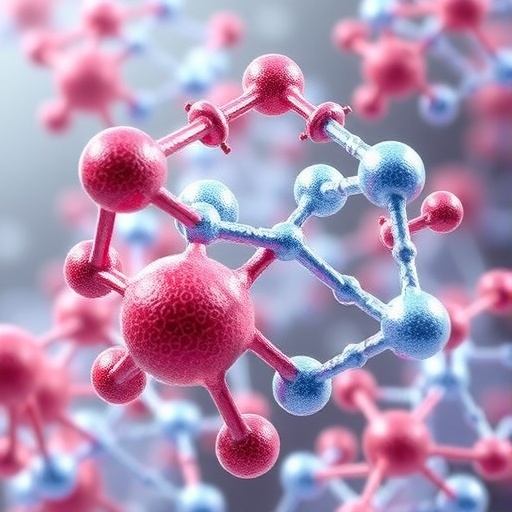In a groundbreaking advancement poised to transform cellular biology and disease diagnostics, researchers at the University at Buffalo have developed a novel molecular tool that could unlock the elusive world of glycans—complex sugars that cloak the surfaces of cells. These carbohydrate structures, despite their critical roles in cell communication and disease processes, have long remained enigmatic due to the lack of effective methods for their study. A recent publication in Nature Communications on July 18, 2025, details how scientists ingeniously reengineered an enzyme originally tasked with synthesizing sugars into a precise glycan-binding protein, enabling the identification and analysis of sugar patterns with unprecedented specificity.
Glycans form intricate, dense envelopes around cells, modulating interactions in the biological environment. Unlike DNA or proteins, glycans are profoundly diverse in structure, making them notoriously difficult to analyze and characterize. Standard investigative tools have fallen short in targeting these sugar moieties, mainly because glycans do not elicit strong immune responses or display easily recognizable sequences. The challenge has long been to develop a molecular “spotlight” capable of selectively binding and illuminating specific glycan structures, thereby revealing their functions in health and disease.
The University at Buffalo team focused their efforts on ST3Gal1, a glycosyltransferase derived from pigs, which naturally catalyzes the addition of sialic acid residues to forming glycan chains. By introducing a strategically chosen mutation, termed H302A, they effectively abolished the enzyme’s catalytic activity—disabling its sugar-synthesizing capabilities—while simultaneously converting it into a binding agent with high affinity for sialylated core-2 O-glycans. This reimagined enzyme, suitably named sCore2, acts as a molecular probe that can latch onto these sugar residues without altering them, a feat that opens broad horizons in glycan detection.
.adsslot_TkNQK1vXFg{width:728px !important;height:90px !important;}
@media(max-width:1199px){ .adsslot_TkNQK1vXFg{width:468px !important;height:60px !important;}
}
@media(max-width:767px){ .adsslot_TkNQK1vXFg{width:320px !important;height:50px !important;}
}
ADVERTISEMENT
Developing sCore2 demanded not only the mutation of ST3Gal1 but also sophisticated enhancement techniques. Employing mammalian surface-display technology, the team expressed the mutant enzyme on the exterior of mammalian cells, harnessing the natural cellular machinery to foster proper folding and display of functional proteins. This approach optimized sCore2’s ability to interact with its target glycans under physiologically relevant conditions, a critical step that improves the probe’s specificity and binding strength in complex biological environments.
To visualize sCore2’s binding events, the researchers conjugated the enzyme to fluorescent antibodies. This engineering allowed the probe to emit a detectable glow upon binding to sialylated core-2 O-glycans, facilitating visualization through advanced imaging techniques like flow cytometry and fluorescence microscopy. Testing on human blood and tissue samples corroborated the presence of these glycans predominantly on mature immune cells and within certain cancerous tissues, notably breast cancer. Moreover, sCore2 unveiled glycan presentations not previously observed in organs such as the spleen and pancreas, hinting at unexplored biological functions.
The implications of these findings extend deeply into disease biology, as the differential expression of sialylated core-2 O-glycans could serve as reliable biomarkers for cancer detection and immune cell phenotyping. The ability to pinpoint these sugars provides a new dimension in diagnosing pathological states and monitoring immune responses. Additionally, the tool sets a precedent for the design of a broader repertoire of custom glycan-binding proteins, potentially culminating in a comprehensive “dictionary” of sugar-recognizing molecules tailored to various biomedical applications.
Beyond the immediate scope of glycobiology, this research signals a paradigm shift in enzyme engineering. The concept of reversing enzyme functionality—transforming synthetic glycosyltransferases into binding proteins—illustrates a versatile platform approach. As noted by Dr. Sriram Neelamegham, the corresponding author and Distinguished Professor at UB, this strategy could be extrapolated to human genes and diverse enzyme classes, enabling scientists to construct sophisticated molecular sensors for many elusive biomolecules.
This advancement also demonstrates the significance of structural biology in guiding molecular design. The team employed detailed knowledge of the enzyme’s three-dimensional conformation and binding interfaces to rationally select the H302A mutation, ensuring the switch in enzymatic behavior without compromising structural integrity. The availability of high-resolution structural models facilitated targeted alterations and propagation of desirable binding properties.
The ongoing development of sCore2 and related probes is fuelled by interdisciplinary collaboration among the university’s departments of Biomedical Engineering, Pathology and Anatomical Sciences, and Medicine. Their collective expertise spans enzymology, chemical biology, and biophysics, culminating in this innovative glycan-detection system. This convergence underscores the increasing importance of cross-disciplinary approaches in solving complex biological puzzles.
Protecting the intellectual property associated with sCore2, the researchers have filed a provisional patent, safeguarding both the composition of the engineered enzyme and the methodologies underpinning its creation. Funding from the National Institutes of Health and the UB Center of Excellence in Bioinformatics and Life Sciences continues to propel this promising avenue of research forward, with the team pursuing further refinements and applications.
In sum, this pioneering work heralds a new era in the exploration of cellular sugar landscapes. By equipping scientists with a versatile, highly specific glycan-binding probe, the study illuminates previously hidden dimensions of cell biology and disease. As the toolkit expands, so too will our capacity to diagnose, monitor, and potentially intervene in diseases through the language of cellular carbohydrates, a realm once deemed too complex to decode.
Subject of Research: Engineering glycosyltransferases into glycan-binding proteins to enable specific detection of sialylated core-2 O-glycans on cells.
Article Title: Engineering glycosyltransferases into glycan binding proteins using a mammalian surface display platform
News Publication Date: August 14, 2025
Web References:
https://www.nature.com/articles/s41467-025-62018-z#author-information
http://dx.doi.org/10.1038/s41467-025-62018-z
References:
Previous related study in Small: https://onlinelibrary.wiley.com/doi/full/10.1002/smll.202502318
Review article in Glycobiology: https://academic.oup.com/glycob/advance-article/doi/10.1093/glycob/cwaf041/8210292
Image Credits: University at Buffalo
Keywords
Cell biology, Life sciences, Chemical biology, Structural biology, Protein functions, Pharmacology, Glycobiology, Enzymology, Biochemical processes, Molecular targets
Tags: advancements in disease detection methodscellular sugar pattern analysiscomplex sugars and cell communicationenzyme redesign for disease diagnosticsglycan-binding protein developmentglycans in cellular biologyglycosyltransferase from pigsinnovative approaches to glycobiologymolecular tools for glycan studyNature Communications publication on glycanstargeting glycan structures in researchUniversity at Buffalo research breakthroughs





